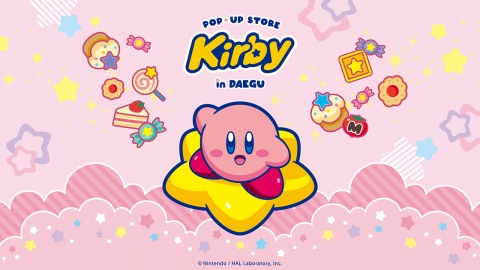- Markets Are Weak Despite Interest Rate Cut? Hawkish outlook impact
- Five Monetary Policy Committee members insist on "freezing after three months"
- Lee Chang-yong "should maintain domestic economic growth, potential growth rate"
- Rates cut cycle begins, but sluggish domestic demand continues for the time being
■ Host: Reporter Cho Tae-hyun
■ Air date: October 15, 2024 (Tuesday)
■ Talk: Choi Jin-ho, Economist at Woori Bank's Investment Product Strategy Department
* The text below may differ from the actual broadcast content, so please check the broadcast for more accurate information.
◆ Reporter Cho Tae-hyun (hereinafter referred to as Cho Tae-hyun): This is a segment that delivers information on the trend of becoming rich. It is time to listen to various information to become rich from experts in each field. Today, we will be joined by Choi Jin-ho, economist at Woori Bank's Investment Product Strategy Department. Please come in.
◇ Choi Jin-ho, Economist at Woori Bank's Investment Product Strategy Division (hereinafter referred to as Choi Jin-ho): Yes, hello. I'm Choi Jinho.
◆ Cho Tae-hyun: I think what the doctor paid attention to is the Monetary Policy Committee, but the Monetary Policy Committee cut it this time. How did you like it?
◇ Choi Jin-ho: Because this time, the market consensus was very much on the side that it was going to cut the benchmark interest rate. It can be seen as a result consistent with that. However, after the Monetary Policy Committee, the market reaction was very hot.
◆ Cho Tae-hyun: It was lukewarm.
◇ Choi Jin-ho: Yes, I don't think so. It's a story that's already been a lot of issues in the market. And if you look at the contents of the Monetary Policy Committee itself, I think this response came out because it showed the nature of a hawkish cut, saying that it would go slow in the future rather than aggressively.
◆ Cho Tae-hyun: The Monetary Policy Committee decided to cut it hawkishly from the beginning, as you said, whether it was a hawkish cut or a dovish freeze. If you were to analyze that part in more detail, how did you see it?
◇ Choi Jin-ho: To see it as a hawkish cut, first of all, it's doveish, it's hawkish. I think I should explain this term for a moment. When it comes to economic stimulus and monetary policy, it's usually called dovish to lower interest rates by focusing on stimulating the economy.
◆ Cho Tae-hyun: Relaxing things.
◇ Choi Jin-ho: On the other hand, a policy that focuses on inflation and financial stability and takes a conservative approach to rate cuts. These things are called hawkish personalities. I cut it this time, but it could be a little hawkish in the future. So, the staff will be able to go a little slower in the future. Among the Monetary Policy Committee members, the decision to cut the rate was not unanimous. There was one person who insisted on freezing. And the question of what do you think the benchmark interest rate will be like in the next three months? It can be seen as the Korean version of forward guidance. Five of the six people except the governor cut once this time, so let's freeze it a little after three months and observe the effect of the rate cut. It is known that only one person expressed his opinion that the domestic economy is very bad now, so it would be necessary to cut it additionally three months later.
◆ Cho Tae-hyun: Okay. So, there were minority opinions, and I conveyed to the market the opinion that I will take steps a little bit slowly in the future, but as a result, the market seems to have responded a little lukewarmly. How can we look at the future? Then at the end of the year, should I say that there is no more reduction?
◇ Choi Jin-ho: To summarize the forward guidance of the Monetary Policy Committee members and the contents of President Lee's press conference, there is only one Monetary Policy Committee left in November. I think the possibility of a reduction here is slim. If so, I should tell you which way the direction of the base rate is looking at in the long run, but anyway, the direction itself is very downward. During the Monetary Policy Committee's press conference, there were many questions from reporters asking if we should cut interest rates because domestic demand is very bad, and the president made such a statement here. You said that it would be desirable to maintain at least the potential growth rate in the domestic economy.
◆ Cho Tae-hyun: What is the potential growth rate?
◇ Choi Jin-ho: The potential growth rate is the level of growth that the economy can achieve when all the factors that can be produced without idle resources are put in the economy.
◆ Cho Tae-hyun: So do I just have to understand the maximum growth rate that I can achieve without any side effects?
◇ Choi Jin-ho: That's right. And the potential growth rate is always when we talk about growth, we have to look at interest rates together. The potential growth rate itself is the kind of growth rate that can be achieved under the assumption of a neutral interest rate.
◆ Cho Tae-hyun: And what is the neutral interest rate?
◇ Choi Jin-ho: Neutral interest rates are an academic concept. We're talking about those interest rate levels that you can invest in the macroeconomy and match your total savings and achieve growth without triggering inflation.
◆ Cho Tae-hyun: This is also a good interest rate level without any side effects. That's how much you can understand.
◇ Choi Jin-ho: That's right. But the important thing is that the potential growth rate and the neutral interest rate that I just mentioned are all academic concepts in the textbook. Since we are not at the level where we can observe any indicators, the scope is estimated in various ways depending on the researcher's estimation methodology or whether the quantitative model was used. The important thing is that the governor made that statement. You also spoke at the Monetary Policy Committee press conference yesterday. And he also spoke at the National Assembly's entry committee yesterday, and no matter what research methodology is used, the current base rate is slightly above the neutral rate.
◆ Cho Tae-hyun: So it's a pretty high level of interest rates.
◇ Choi Jin-ho: Yes. So he acknowledged that the direction itself is correct to go down.
◆ Cho Tae-hyun: Okay. But I think the Bank of Korea's concerns are about this. As you said earlier, there seems to be a concern about whether domestic demand can be revived by lowering the interest rate and continuously lowering the base rate. What do you think, doctor?
◇ Choi Jin-ho: That's also a very practical point of view and a lot of debate in academia. In the meantime, institutions such as KDI. The Korea Development Institute has pointed out high interest rates as the cause of sluggish consumption. However, in the case of the Bank of Korea, such savings derived from the demographic structure are too excessive rather than a negative effect on any high interest rate. In particular, there is a strong opinion that there is a structural problem with consumption decreasing because some assets, called real estate sides, are focused on fixed assets that cannot be returned. Therefore, it is true that lower interest rates will help consumption to some extent, but it seems that there is a little disagreement over how much its effectiveness will improve.
◆ Cho Tae-hyun: There is also a risk that more money will go toward fixed assets.
◇ Choi Jin-ho: Yes. That's why the Bank of Korea continues to take a little conservative approach to aggressively lowering interest rates from the perspective of financial stability.
◆ Cho Tae-hyun: Anyway, as you said, we will continue to go in the direction of reduction, so when and how far should we go down and respond?
◇ Choi Jin-ho: I think this is very important. As I mentioned earlier, we have no choice but to estimate how far monetary policy will go with these two criteria: potential growth rate and neutral interest rate. Unfortunately, neither of these are indicators that we can actually observe with our eyes. Therefore, we have no choice but to refer to various research data, but among them, the Bank of Korea is the kind of institution that oversees monetary policy, right? So, if you look at the recent research report released by the Bank of Korea, Korea's potential growth rate is about 2%. In addition, the neutral interest rate is estimated to be 1.8 to 3.3%.
◆ Cho Tae-hyun: It's too wide.
◇ Choi Jin-ho: That's right. So I estimate it to be about 2.5%, the median value. The Bank of Korea has presented a 2.1% economic growth forecast for 2025. This is pretty close to the potential growth rate of 2%. And from that point of view, as I said earlier, this potential growth rate and neutral interest rate are a pair of concepts. If so, we can infer that the level of interest rate at this time will also converge at around 2.5%, the median of the neutral interest rate. In that sense, the current base rate is 3.25%, so if it goes from the second half of next year to the end of next year, the base rate could be around 2.5%.
◆ Cho Tae-hyun: Then let me ask you this briefly. So how do we respond?
◇ Choi Jin-ho: So for bond investors, long-term bonds are actually very good when interest rates go down. But the problem now is that the bond market is already foreshadowing a very significant cut in the base rate. Even if the benchmark interest rate goes to 2.5% at the end of next year, most of the long-term products for more than 10 years now go back and forth around 3%. If that happens, it is normal for this original long-term product to have a higher spread compared to the base rate. That's why if the base rate doesn't go down further below 2.5%, it's very difficult for the long-term interest rate to go down significantly. That's why in the past base rate cut cycle, it was a very advantageous strategy to just buy an extra budget when interest rates went down. However, I don't think you should approach it from a perspective now, and when interest rates go up little by little, when bond rates go up even a little, counter-trading. So, I think it's right to approach it with a strategy of buying in installments when it goes up even a little.
◆ Cho Tae-hyun: Okay. So far, we have looked at the story of last week's Monetary Policy Committee and our countermeasures. I was with Choi Jin-ho, an economist at Woori Bank's Investment Product Strategy Department. Thank you for talking today.
◇ Choi Jin-ho: Thank you.
[Copyright holder (c) YTN Unauthorized reproduction, redistribution and use of AI data prohibited]
Economy
View the full list of articles- Nationwide, Seoul house prices rise, fall in 10 months
- Manufacturing Sales Slowdown in Q4...below the baseline for the second consecutive quarter
- Consumer Resources "Excellent in accuracy of baby formula maker, willow and baby brezza"
- Lee Chan-hee, chairman of Samsung's quasi-audit committee, said, "We need to innovate our governance structure, including rebuilding control towers."
![[Living economy] Interest rate cut, isn't it a panacea? "Lack of domestic demand will continue for a while."](https://image.ytn.co.kr/general/jpg/2024/1015/202410150738161542_d.jpg)


![[On site Y] "There's no visual hole!" 82 Major Declares All-Rounder Idol With 'X-82' (Roundup)](https://image.ytn.co.kr/general/jpg/2024/1015/202410151257390434_h.jpg)
![[Yetterview] The production team of "Black and White Cook" said, "There was no reason not to do Season 2..."I'm recruiting Gordon Ramsay".](https://image.ytn.co.kr/general/jpg/2024/1015/202410151256597358_h.jpg)


